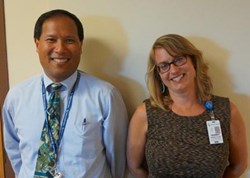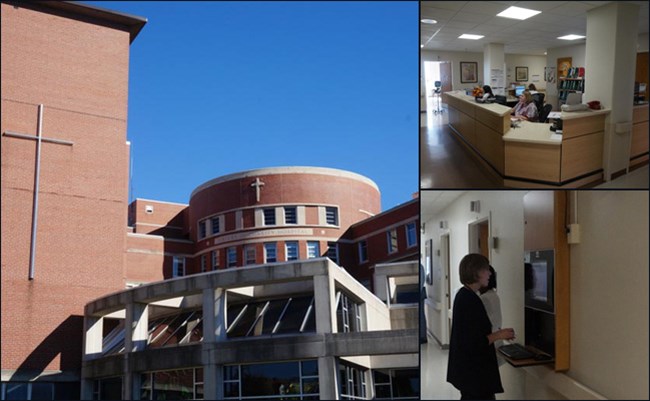The Meaningful Use Effect
If you question whether Meaningful Use is benefitting healthcare, look no further than Catholic Health. This health system credits the program for many of its recent clinical improvements.
Many healthcare leaders question whether Meaningful Use (MU) — a federally funded incentive program designed to spur health IT adoption and use — is actually doing the healthcare industry any good. Many argue that rather than helping to reduce the cost of healthcare and improve clinical outcomes, the program is simply a tool for the government to collect health data and keep tabs on hospitals and physicians. In fact, in a recent Health IT Outcomes article titled Is Meaningful Use Worth The Effort?, some physicians said the program was having an adverse effect on their practice of medicine. They called MU “misguided” and claimed it was turning physicians into data entry clerks rather than caregivers.
Dr. Michael Galang, SVP and CIO of Catholic Health, understands this assessment of the MU program by other physicians, but he wholeheartedly disagrees with it. “You have to start with some baseline when it comes to widespread EHR adoption,” he says. “That’s what the stages of MU have provided thus far. Stage 1 was primarily focused on standardizing the collection of data. It provides hospitals and clinicians with parameters on what data to collect and how to collect it. This step is a necessity because it will help ensure that all providers have the same type of information and are on the same page. Ultimately, this will make it easier for all of us to share patient data and coordinate care going forward. We’re already starting to see how this will play out in Stage 2.”
INTRA-NETWORK COMMUNICATIONS KEY DRIVER FOR EHR ADOPTION
Catholic Health is a non-profit health system based in Western New York that consists of four hospitals, an expansive primary care network, and several imaging centers. The health system began its EHR journey back in 2004 (long before MU went into effect), when it entered into a strategic alliance agreement with Siemens to implement both Soarian Clinicals and Soarian Financials enterprise-wide throughout Catholic Health.
 |
| Dr. Michael Galang, SVP and CIO, and Shanay Shearer, RN and VP, clinical systems, at Catholic Health. |
The primary driver for Catholic Health’s EHR initiative was to provide cohesive communication between sites. Initially, Catholic Health had a variety of disparate clinical systems in use at its different hospitals and outpatient locations, and none of them integrated with one another.
“If a patient traveled between different sites in the Catholic Health network, their health record didn’t automatically travel with them,” says Shanay Shearer, RN and VP, clinical systems at Catholic Health. “Clinicians at one site would have to call other sites and have patient records faxed to them. This made it very difficult for clinicians to get a full view of a patient’s history.”
By standardizing its operations on the Siemens Soarian platform, hoped to put an end to this data sharing inefficiency by providing all sites in its network with access to the same patient record via a common, integrated EHR. Due to the sheer size and scope of this initiative, Catholic Health took a phased approach to implementation and roll out.
MU PROVIDES EHR IMPLEMENTATION DIRECTION & MOTIVATION
By the time the MU program was announced as part of the HITECH Act in 2009, Catholic Health was already well underway with its EHR implementation. However, the health system felt that the MU program not only helped validate its EHR efforts, but also provided some much needed direction, specifically in the area of CPOE.
“Before MU, we were on the fence with how we should approach physician documentation within the EHR,” says Shearer. “We hadn’t yet decided whether or not we would do CPOE or how extensively we would incorporate it into our documentation processes. MU convinced us to embrace CPOE, and provided us with clear parameters on how to implement it.”
Medication reconciliation was another area at Catholic Health where MU made an immediate impact. Catholic Health was engaging in medication administration/reconciliation activities prior to MU, but they were largely hit or miss. “No one — physicians, nurses, pharmacists — ever took ownership of medication reconciliation processes at Catholic Health prior to MU,” says Shearer. “Therefore, it often wasn’t getting done correctly. The advanced medication reconciliation directives included as part of Stage 1 MU forced us to put a process in place that delegated ownership of medication reconciliation and ensured it was performed for every patient, every time, without fail.”
According to Dr. Galang, MU also helped to energize the IT department and senior executives at Catholic Health. “MU provided us with the tools and motivation to speed up our EHR implementation, while ensuring we did so effectively,” he says.
 |
| Sisters of Charity in Buffalo is one of the flagship hospitals in the Catholic Health network that is benefitting from EHR adoption and MU. |
Perhaps most importantly for Catholic Health, MU meant that EHR adoption and use was here to stay. The program pushed all hospitals to implement EHRs, which helped Catholic Health convince physicians to put in the effort necessary to make the initiative a success.
“With MU, physicians could no longer retreat to a competitor in the region to avoid having to use an EHR,” says Dr. Galang. “They could either learn how to use an EHR here at Catholic Health or live through the pain somewhere else.”
MU DELIVERS COMPELLING LAB & PATIENT ID BENEFITS
MU has provided Catholic Health with direction and motivation that has been helpful in its EHR adoption efforts, but that still doesn’t explain what benefit (if any) EHR implementation in line with MU parameters has had on the health system’s practice of medicine. While Dr. Galang and Shearer admit that tangible metrics are rare given its stage of EHR optimization, they are starting to identify critical areas where the technology is making a significant impact.
First, the use of EHR technology (and particularly CPOE) is resulting in notable operational efficiencies within Catholic Health’s lab department. “Our patients used to frequently complain about multiple sticks for lab draws,” says Shearer. “With CPOE, we’ve standardized our lab orders, which helps document the lab collection process more effectively and protects against multiple samples being drawn. As a result, we’ve realized a 30% reduction in the number of multiple stick complaints we receive from patients.”
The medication reconciliation processes Catholic Health put in place as a result of MU are also paying dividends, particularly in the area of patient identification. “Prior to MU, we weren’t aware of all of our patient identification errors because our medication reconciliation efforts were sporadic,” says Shearer. “When we started doing medication administration as outlined by MU, we were shocked to learn that our patient identification error rate was between 10% and 20%. We made the appropriate changes to our processes and systems to reduce this error rate to less than 2%.”
If that example doesn’t convince you of the value of MU, I’m not sure what will.
